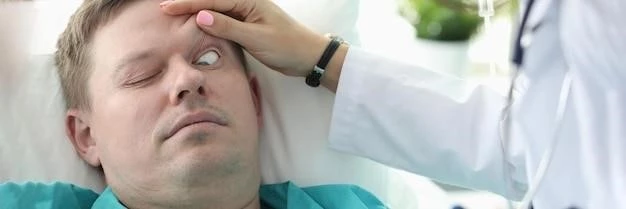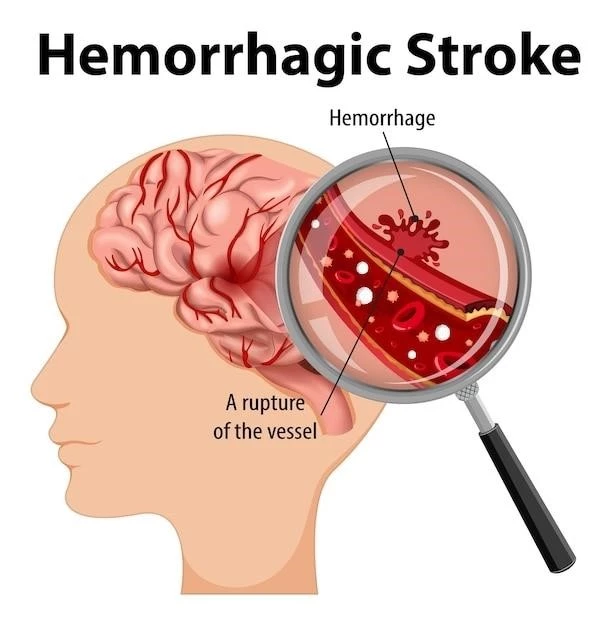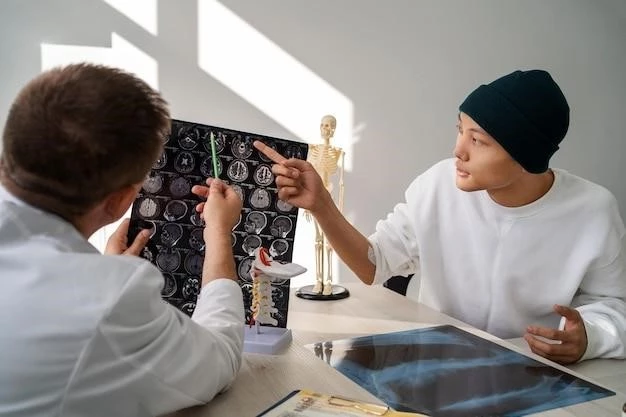Introduction
Explore the complexities of a rare condition known as Microcephaly Hypergonadotropic Hypogonadism Short Stature Syndrome, characterized by multiple congenital anomalies and familial cases. Discover the genetic and clinical aspects of this condition.
Overview of Microcephaly Hypergonadotropic Hypogonadism Short Stature Disease
This rare syndrome combines microcephaly, hypergonadotropic hypogonadism, and short stature, often with facial dysmorphism. Familial cases with multiple anomalies have been reported, emphasizing the importance of understanding the genetic and clinical manifestations of this condition. Research highlights the distinct features of the syndrome, such as early-onset growth failure, endocrine dysfunction, and potential neurological complications; Diagnosis and management strategies play a crucial role in improving the quality of life for individuals affected by this complex disorder.
Clinical Features
Discover the distinct clinical features of Microcephaly Hypergonadotropic Hypogonadism Short Stature Syndrome. Learn about the varying symptoms and facial dysmorphism associated with this rare condition.
Characteristics of the Syndrome
Patients with Microcephaly Hypergonadotropic Hypogonadism Short Stature Disease exhibit a unique combination of physical traits, including microcephaly, hypergonadotropic hypogonadism, short stature, and facial dysmorphism. Consanguinity in familial cases may contribute to the distinctive features observed in affected individuals. Understanding the clinical characteristics of this syndrome is essential for accurate diagnosis and appropriate management strategies.
Variability in Symptoms
Explore the varying presentation of symptoms in individuals affected by Microcephaly Hypergonadotropic Hypogonadism Short Stature Disease. Understand the spectrum of manifestations, including facial dysmorphism, growth failure, endocrine abnormalities, and potential neurological issues. Recognizing the diverse symptomatology can aid in the early identification and management of this complex syndrome.
Genetic Component
Understand the familial cases and potential genetic links associated with Microcephaly Hypergonadotropic Hypogonadism Short Stature Disease. Explore the unique genetic variations contributing to the syndrome’s development.
Familial Cases and Consanguinity
Explore the occurrences of familial cases and consanguinity in individuals affected by Microcephaly Hypergonadotropic Hypogonadism Short Stature Disease. Familial reports highlight a pattern of genetic links and shared characteristics among siblings, emphasizing the importance of understanding the hereditary aspects of this complex syndrome.
Potential Genetic Links
Investigate the potential genetic links contributing to the development of Microcephaly Hypergonadotropic Hypogonadism Short Stature Syndrome. Explore the hereditary factors associated with this rare condition, including consanguinity in familial cases and patterns of inheritance. Understanding the genetic underpinnings of the syndrome is crucial for diagnosis, genetic counseling, and potential future therapeutic advancements.
Diagnosis
Early identification of Microcephaly Hypergonadotropic Hypogonadism Short Stature Syndrome involves recognizing the distinct physical traits, growth patterns, and endocrine dysfunctions associated with this condition. Genetic testing plays a crucial role in confirming the diagnosis.
Diagnostic Criteria
The diagnostic process for Microcephaly Hypergonadotropic Hypogonadism Short Stature Syndrome involves recognizing specific physical traits, evaluating endocrine functions, assessing growth patterns, and considering facial dysmorphism. Genetic testing is essential for confirming the diagnosis and understanding the underlying genetic components contributing to this complex condition.
Genetic Testing
Genetic testing plays a crucial role in the diagnosis of Microcephaly Hypergonadotropic Hypogonadism Short Stature Disease. By identifying specific genetic variations, healthcare providers can confirm the presence of this rare syndrome and better understand its underlying genetic components. Additionally, genetic testing can assist in genetic counseling and potentially pave the way for targeted therapeutic approaches in the future.
Management
Medical interventions and therapeutic approaches play a pivotal role in managing Microcephaly Hypergonadotropic Hypogonadism Short Stature Syndrome. Early diagnosis and personalized treatment strategies enhance the quality of life for individuals affected by this complex condition.
Medical Interventions
Effective medical interventions are crucial in managing the complexities of Microcephaly Hypergonadotropic Hypogonadism Short Stature Syndrome. These interventions aim to address growth issues, endocrine dysfunctions, facial dysmorphism, and any associated congenital anomalies, improving the overall well-being and quality of life for individuals affected by this rare condition.
Therapeutic Approaches
Therapeutic approaches for managing Microcephaly Hypergonadotropic Hypogonadism Short Stature Syndrome encompass a multidisciplinary strategy focusing on addressing growth issues, endocrine abnormalities, facial dysmorphism, and associated congenital anomalies. Personalized treatment plans tailored to the individual’s needs can significantly enhance their quality of life and overall well-being.

Prognosis
Understanding the long-term outlook of individuals with Microcephaly Hypergonadotropic Hypogonadism Short Stature Syndrome and considering quality of life factors is essential. Stay informed about the potential challenges and future directions in managing this complex condition.
Long-Term Outlook
Understanding the long-term prognosis for individuals with Microcephaly Hypergonadotropic Hypogonadism Short Stature Syndrome is crucial. Discover more about the challenges, management strategies, and potential future advancements to ensure a comprehensive approach to care for those living with this complex condition.
Quality of Life Considerations
Considering quality of life factors for individuals with Microcephaly Hypergonadotropic Hypogonadism Short Stature Syndrome is essential. Addressing long-term care strategies, support services, and potential advancements can significantly impact the well-being and overall quality of life for those managing the challenges associated with this rare condition.
Research and Studies
Stay informed about the recent findings and ongoing research related to Microcephaly Hypergonadotropic Hypogonadism Short Stature Disease. Explore the latest advancements and potential future directions in understanding and managing this complex syndrome.
Recent Findings
Recent studies have observed a constellation of features in individuals with Microcephaly Hypergonadotropic Hypogonadism Short Stature Syndrome, including microcephaly, hypergonadotropic hypogonadism, short stature, and facial dysmorphism. The syndrome presents a unique set of congenital anomalies and endocrine dysfunctions that necessitate further research to enhance diagnostic and management strategies for affected individuals.
Ongoing Research
Current studies focus on further understanding the complex manifestations of Microcephaly Hypergonadotropic Hypogonadism Short Stature Syndrome. Researchers are exploring genetic variations, diagnostic techniques, and potential therapeutic avenues to enhance the management and quality of life for individuals affected by this rare condition.

Support and Resources
Explore patient assistance programs and support groups available for individuals with Microcephaly Hypergonadotropic Hypogonadism Short Stature Syndrome. Access resources to aid in managing this rare condition and connect with communities offering assistance.
Patient Assistance Programs
Access patient assistance programs designed to provide support for individuals managing Microcephaly Hypergonadotropic Hypogonadism Short Stature Syndrome. These programs offer valuable resources, such as coupons, savings cards, or co-pay assistance, to help individuals afford necessary medications and treatments.
Support Groups
Engage with supportive communities and resources tailored for individuals impacted by Microcephaly Hypergonadotropic Hypogonadism Short Stature Syndrome. Connect with others facing similar challenges, access valuable information, and find emotional support to navigate the complexities of this rare condition.
Summarize the key points of Microcephaly Hypergonadotropic Hypogonadism Short Stature Syndrome and explore the future directions in understanding and managing this complex disease. Stay informed and proactive in seeking appropriate care and support for affected individuals.
Summary of Key Points
Based on the information found online today, the rare condition known as Microcephaly Hypergonadotropic Hypogonadism Short Stature Syndrome is characterized by multiple congenital anomalies and familial cases. Individuals affected by this syndrome display features such as microcephaly, hypergonadotropic hypogonadism, short stature, and facial dysmorphism. Familial cases with consanguinity have been reported, emphasizing potential genetic links contributing to the syndrome. Patients may exhibit symptoms like early-onset growth failure, endocrine dysfunction, and distinctive facial characteristics. Genetic testing is essential for diagnosis confirmation. Medical interventions and therapeutic approaches are vital for managing the condition and improving the quality of life for individuals. The long-term outlook involves considering quality of life factors and facing potential challenges with proactive care. Ongoing research aims to enhance understanding and management strategies for this complex disease. Patient assistance programs and support groups offer valuable resources and aid individuals in navigating the challenges associated with this rare condition. In conclusion, staying informed about the syndrome and future research can help individuals affected by this condition access appropriate care and support.
Future Directions in Understanding the Disease
Future research efforts aim to delve deeper into the complexities of Microcephaly Hypergonadotropic Hypogonadism Short Stature Syndrome. By exploring genetic variations, diagnostic advancements, and potential therapeutic options, researchers hope to enhance the diagnostic accuracy, management strategies, and overall care for individuals affected by this intricate condition.
